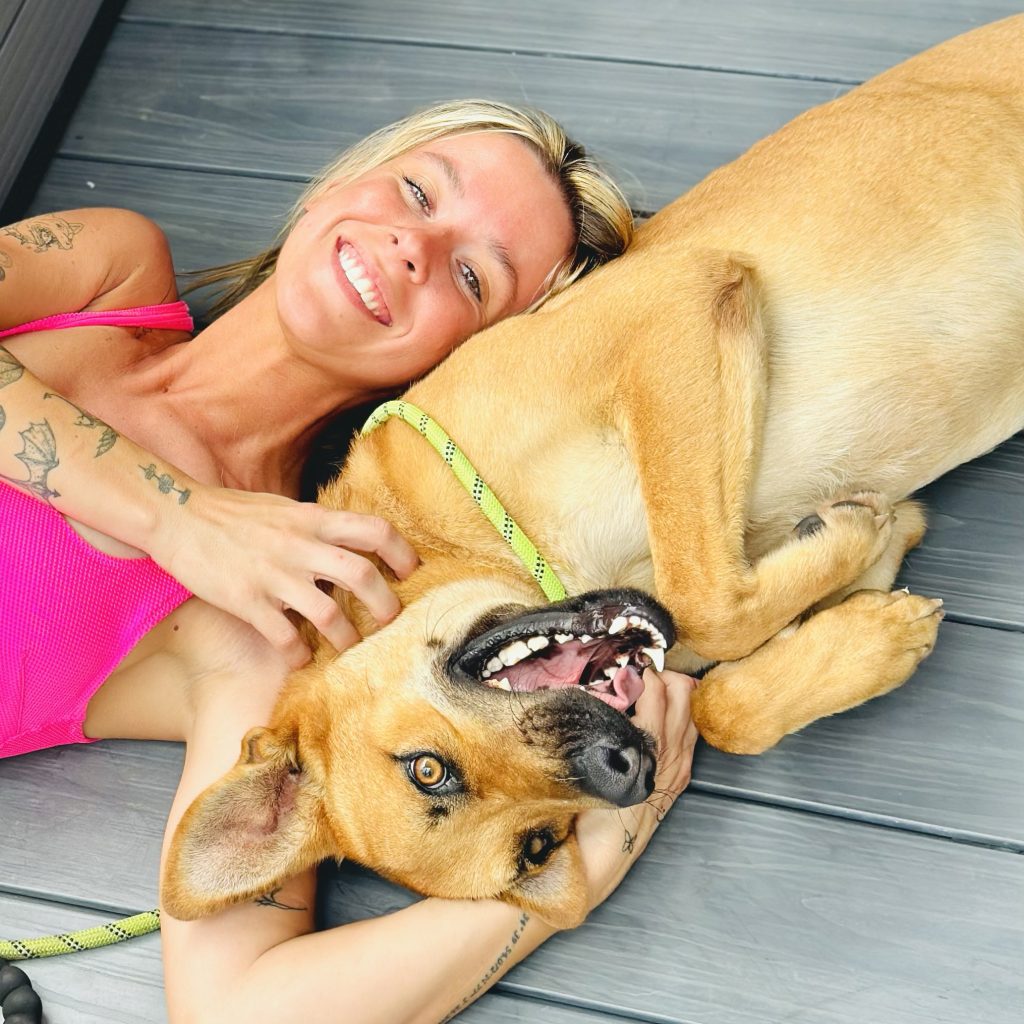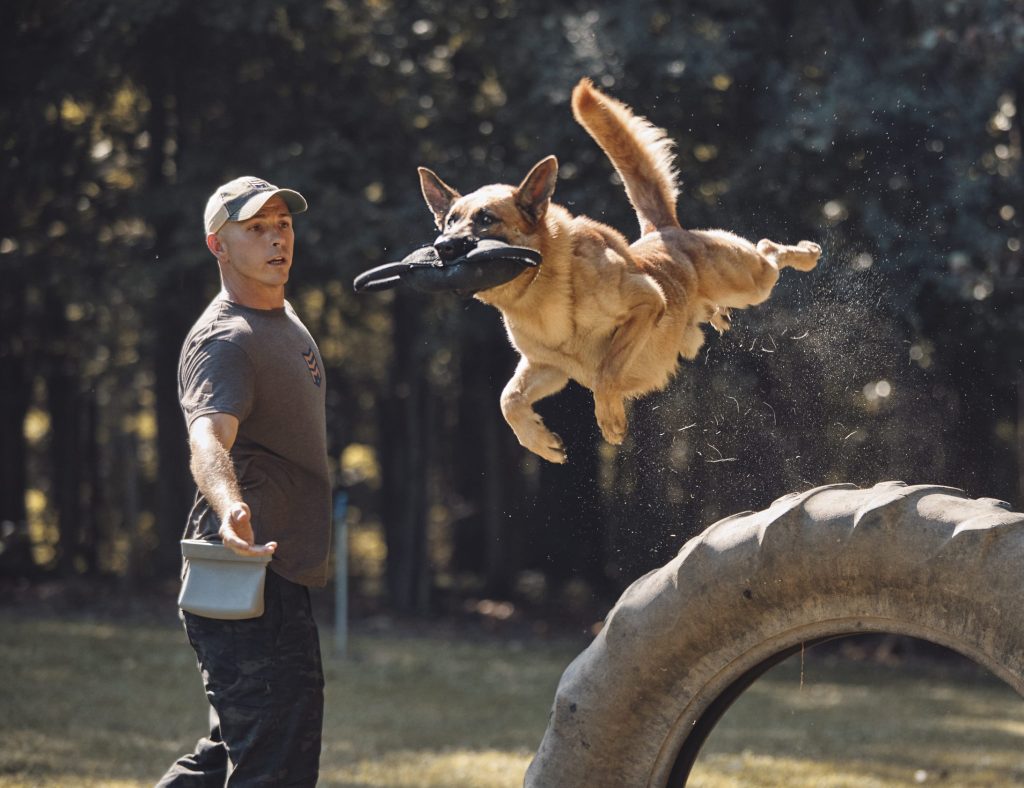Unleashing Happiness: Why Dog Training is Essential for the Well-Being of Dogs and Their Owners
Dogs bring immeasurable joy and love into our lives, becoming cherished members of our families. To ensure their well-being and enhance the bond we share, dog training plays a pivotal role. Training is essential for the overall well-being of our furry friends, and the benefits it brings to their owners. From mental stimulation to improved communication and safety, to self-confidence and bonding, there are several key reasons why it’s a must for every dog owner. Dogs and humans form a unique bond, unlike any other. Without training and learning, however, having a dog can be frustrating and often overwhelming.
Mental Stimulation
Dogs are intelligent creatures who thrive on mental challenges. Training sessions provide the necessary mental stimulation that keeps their minds sharp and engaged. Through learning commands, tricks, and problem-solving activities, dogs develop cognitive skills, prevent boredom, and maintain a healthy mental state. Frequent mental stimulation helps our canine companions less likely to be destructive in our home and with our belongings, which is one of the biggest complaints many people fear with dog ownership. The mental stimulation gained from training contributes to their overall mental health and happiness.
Bonding and Communication
Training sessions create a strong bond between dog and owner. They offer an opportunity to establish clear communication and build trust. As dogs learn to understand and respond to commands, owners feel a sense of accomplishment and pride, strengthening the emotional connection with their furry companions. Effective communication leads to a harmonious relationship built on mutual understanding and respect.
Behavioral Development
One of the key benefits of dog training is the development of good behavior and manners. Dogs learn to follow commands such as “sit,” “stay,” and “leave it,” which promotes positive habits and discourages unwanted behaviors. Training sessions address common behavioral issues, such as excessive barking, jumping, or pulling on the leash, enabling dogs to become well-behaved members of society. This behavioral development enhances the quality of life for both dogs and their owners, making daily interactions more enjoyable and stress-free.
Safety and Control
Training is essential for ensuring the safety of dogs in various environments. Dogs that respond to commands and have good recall are less likely to put themselves in risky situations. Whether it’s avoiding dangerous objects or staying close during walks, training provides owners with control and peace of mind. The ability to keep their dogs safe fosters a sense of responsibility and strengthens the bond between owner and pet.
Socialization
Proper socialization is crucial for dogs to thrive in different settings. Training exposes dogs to various people, animals, and environments, teaching them how to interact appropriately. Socialization prevents fear or aggression in new situations, allowing dogs to enjoy outings, visits to the park, and interactions with other pets. Well-socialized dogs become confident, friendly, and adaptable companions, which positively impacts their overall well-being and enriches their lives.
Confidence and Independence
Training builds confidence in dogs, boosting their self-esteem and independence. As they master new commands and skills, dogs gain a sense of accomplishment, leading to a more self-assured demeanor. Confident dogs are better equipped to handle new experiences, cope with changes, and navigate challenging situations. This increased confidence enhances their overall well-being and enables them to lead fulfilling lives. Confidence also helps dogs learn to be non-reactive (desirable), instead of reactive (non-desirable). Non-reactive dogs are less anxious, potentially less fearful and less defensive, and less aggressive. This also builds a level of predictability, which just like other attributes, is better for the dog and the people around it.

As people, especially dog lovers, we love to spoil our dogs. That is ok… when accompanied with structure and training. Dog training helps dogs interact better in life, by teaching skills that help them thrive in any situation.
Canine Training Techniques
Positive reinforcement is a cornerstone of dog training. This technique involves rewarding desired behaviors with treats, praise, or playtime, reinforcing the idea that good behavior leads to positive outcomes. By focusing on rewarding what the dog does right, positive reinforcement encourages them to repeat those behaviors in the future.
Target training involves teaching a dog to touch or follow a target object, such as a stick or your hand. By associating the target with rewards, you can guide your dog to perform specific behaviors or follow commands. Target training can be useful for teaching commands like “come,” “heel,” or daily and more advanced skills.
Desensitization techniques are particularly helpful for dogs with fears, anxieties, or phobias. Desensitization involves gradually exposing the dog to the feared stimulus in a controlled and gradual manner, allowing them to adjust and overcome their fear. Counterconditioning pairs the feared stimulus with something positive, such as treats or play, to create a positive association and change the dog’s emotional response. Not only does this help dogs overcome fears, it also helps them build confidence. Just like in people, this helps their sociability, interaction in public, and reduces unwanted reactions as a result of a defense mechanism.
Capturing involves observing and rewarding a dog’s spontaneous display of a desired behavior. For example, if your dog sits on their own, you can immediately reward them to reinforce the behavior. Shaping involves breaking down a complex behavior into smaller, manageable steps and rewarding the dog as they successfully complete each step. Through shaping, you gradually build up to the desired behavior.
Consistency and patience are essential throughout the training process. Dogs thrive on routine and clear expectations. Consistent cues, rewards, and training methods help them understand what is expected of them. Patience is crucial as dogs may require time to learn and grasp new concepts. By maintaining a calm and patient demeanor, you create a positive learning environment for your dog.
Timing is critical in dog training. Dogs associate rewards or corrections with the behavior they were displaying at the exact moment of reinforcement. Therefore, it’s important to provide immediate feedback to help them understand what they did right or wrong. Clear communication, using consistent verbal cues and hand signals, further aids in conveying your expectations and guiding your dog’s behavior.

Advanced skills are a fun way to bond with your dog, and teach them high level techniques that increase confidence, obedience, and discipline.
Dog Training: Structure & Boundaries Create Freedom
Dog training is not just a means of teaching commands; it is a journey that enhances the well-being of both dogs and their owners. From mental stimulation to improved communication, safety, and socialization, training provides numerous benefits. The strong bond developed through training creates a harmonious relationship built on trust, respect, and understanding. As responsible pet owners, investing in dog training unlocks the true potential of our furry friends, allowing them to thrive and live their best lives. Creating structure, discipline, and teaching your dog rules, actually creates freedom — just like with a child (or people, for that matter) — and teach dogs where and how to operate in any given environment.
Dog training is not a one-time event but an ongoing process that requires patience, consistency, and positive reinforcement. Seek professional guidance or consult reputable resources to ensure effective and humane training practices. By investing time and effort in training, you’ll reap the rewards of a well-behaved, happy, and fulfilled canine companion their entire life.
Trained dogs have the privilege of participating in a wider range of activities, creating lasting memories with their owners. Whether it’s enjoyable walks, outdoor adventures, or interactive games, trained dogs become enthusiastic companions who relish in shared experiences. Their involvement in various activities contributes to a more enriched life, providing both mental and physical stimulation that is essential for their overall well-being.
One of the ways we accomplish our mission of helping military veterans, is through offering dog training in our community. This allows us the financial means to rescue dogs and place them with veterans. To learn more about how we impact two lives — rescuing a dog, and rescuing a veteran — please check out our Canine Battle Buddy Program.




